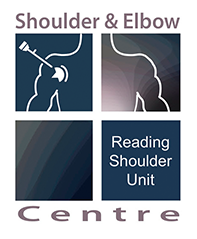Propionibacterium acnes: an underestimated etiology in the pathogenesis of osteoarthritis?
Background: Propionibacterium acnes is a common pathogen in infections after shoulder surgery. Recent reports found positive Pacnes cultures in a high percentage of patients who had revision shoulder arthroplasty for ‘‘aseptic loosening’’ without any overt signs of infection. Isolation of P acnes is difficult, and by use of conventional microbiological protocols of 48-hour incubation, a considerable proportion of patients with possible P acnes infection may remain unidentified.
We recently noted P acnes in shoulder joint cultures in patients undergoing primary shoulder replacement for glenohumeral arthropathy without any signs of infection.
Methods: We collected aspirates and biopsy specimens from 55 consecutive patients with arthritic shoulders undergoing primary joint replacement and examined them for the presence of P acnes. Special measures were taken to ensure that the specimens were carefully taken from within the joint to reduce the risk of contamination to minimal.
Results: In 23 of 55 consecutive patients (41.8%) undergoing primary shoulder joint replacement, P acnes was found in the joint fluid and tissues taken before the insertion of the implants. All these patients were treated early postoperatively with pathogen-directed specific dual oral antibiotic treatment for 4 weeks. In none have any signs of infection developed.
Discussion and conclusion: This finding of a high incidence of P acnes in joints before arthroplasty may suggest a role of P acnes in the pathogenesis of glenohumeral arthropathy. In addition, it raises the question of whether development of painful joint replacement later on and presumed aseptic loosening do, in fact, comprise an unrecognized low-grade infection that has been present since before the index operation.
Level of evidence: Level IV, Case Series, Prognosis Study.
2013 Journal of Shoulder and Elbow Surgery Board of Trustees.
Keywords: Propionibacterium acnes; P acnes; infection; osteoarthritis; glenohumeral arthropathy; primary
shoulder arthroplasty; aseptic loosening; joint replacement
We recently noted P acnes in shoulder joint cultures in patients undergoing primary shoulder replacement for glenohumeral arthropathy without any signs of infection.
Methods: We collected aspirates and biopsy specimens from 55 consecutive patients with arthritic shoulders undergoing primary joint replacement and examined them for the presence of P acnes. Special measures were taken to ensure that the specimens were carefully taken from within the joint to reduce the risk of contamination to minimal.
Results: In 23 of 55 consecutive patients (41.8%) undergoing primary shoulder joint replacement, P acnes was found in the joint fluid and tissues taken before the insertion of the implants. All these patients were treated early postoperatively with pathogen-directed specific dual oral antibiotic treatment for 4 weeks. In none have any signs of infection developed.
Discussion and conclusion: This finding of a high incidence of P acnes in joints before arthroplasty may suggest a role of P acnes in the pathogenesis of glenohumeral arthropathy. In addition, it raises the question of whether development of painful joint replacement later on and presumed aseptic loosening do, in fact, comprise an unrecognized low-grade infection that has been present since before the index operation.
Level of evidence: Level IV, Case Series, Prognosis Study.
2013 Journal of Shoulder and Elbow Surgery Board of Trustees.
Keywords: Propionibacterium acnes; P acnes; infection; osteoarthritis; glenohumeral arthropathy; primary
shoulder arthroplasty; aseptic loosening; joint replacement
(J Shoulder Elbow Surg (2013) 22, 505-511)
